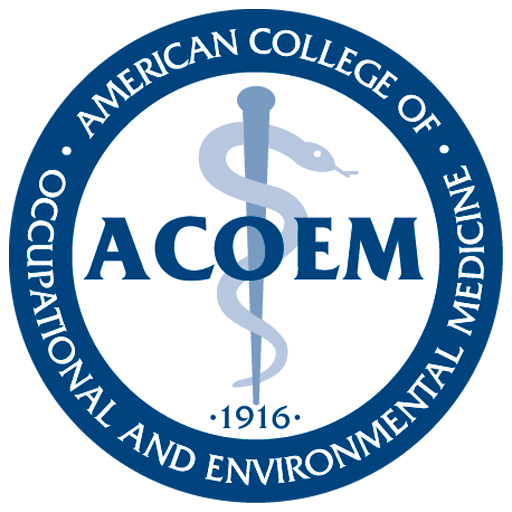
06: U.S. Work Laws and Regulations
Since the passage of the OSHA Act, fatality and injury rates have dropped markedly. Although accurate statistics were not kept until OSHA’s founding, it is estimated that in 1970, about 14,000 workers were killed on the job. That number fell to approximately 4,340 in 2009. During approximately the same period (through 2017), U.S. employment almost doubled to more 130 million workers at more than 7.2 million worksites. After the passage of the OSH Act, the rate of reported serious workplace injuries and illnesses declined from 11 per 100 workers in 1972 to 3.6 per 100 workers in 2009, and it continues to decline. One way that OSHA tracks this trend is through its employer recordkeeping and reporting requirements.
Currently, most workplaces, including medical clinics and hospitals, with more than 10 employees are required to keep a record of serious work-related injuries and illnesses. This information helps employers, workers, and OSHA to evaluate the safety of a workplace, understand industry hazards, reduce those hazards, and implement worker protections to prevent future injuries and illnesses at millions of job sites across the country.
OSHA mandates that most employers use a form called the OSHA 300 log to record certain injuries; records must be maintained at the worksite for at least five years. Each year between February and April, employers must post a summary of the injuries and illnesses recorded the previous year. If requested, copies of the records must be provided at no charge to current and former employees, or their representatives.
Because reporting “everything” would pose an undue burden on employers, OSHA specifies that only certain “serious” injury events, such as bone fractures or medical conditions requiring prescription medication, be logged and reported, thus the common expression “OSHA recordable incidents.” Certain very serious injuries require separate reporting methods: employers must report any worker fatality within 8 hours and any amputation, loss of an eye, or worker hospitalization within 24 hours of occurrence.
Subtleties in the language that providers use to describe injuries, diagnoses, and/or choices of treatment can affect whether they meet the criteria for recordable events. For example, lidocaine injection for pain relief is recordable, but injection of the same medication to allow the provider to manipulate a wound and better examine it may not be recordable. In general:
- An injury that requires treatment by a licensed medical provider commonly is considered recordable.
- An injury that requires only basic first aid, which a non-licensed medical provider could independently administer, is commonly not recordable, regardless who administered the treatment or wrote the
OSHA regulations are not related to workers’ compensation or any other form of injury compensation payment. Although licensed medical providers do not make the recording decisions, their actions can significantly determine how the employer records an incident. OSHA mandates that specific decisions about whether to record an incident and how to classify it are at the sole discretion of the employer.
OSHA regularly updates its regulations and their interpretations. Please seek the most current regulations and/or interpretations.
Recordable Medical Treatments Versus First Aid
The following list is a general guideline as of April 2018 for OSHA-regulated employment sites. There are many variations, exceptions, and additions to this chart.
| Nature of Injury | Recordable Medical Treatment | Not Recordable OSHA First Aid |
| Cuts, lacerations, punctures, splinters, abrasions | -Suture (stitches) -Dermabond application -Any prescription medication -Application of prescription cream, ointment, gel -Surgical debridement -Use of rigid splint | -Butterfly-type wound closure tape -Nonprescription ointment, cream -Removal of foreign body by simple means -Removal of foreign body from the eye with swab or irrigation -Drilling of nail for pressure relief -Use of finger guard |
| Fracture, dislocation | Any diagnosed acute bone break or joint dislocation | No acute bony injury on X-ray or other imaging |
| Strain, sprain | -Any application of rigid immobilizer, splint, or cast, -Almost all use of physical/occupational therapy services | -Use of any soft dressing or support -Use of hot/cold compression -Use of massage therapy |
| Unspecified not feeling well | Therapeutic use of medical (IV) fluid or oxygen | Diagnostic use of fluid or oxygen (or use per protocol), not for symptom treatment |
| Loss of consciousness | All work-related loss of consciousness/syncope | Near-syncope, dizziness, light- headedness |
| Heat stress, dehydration | Therapeutic use of IV fluid | Any nonprescription oral fluid |
| Bruise, contusion | Therapeutic drainage of any body fluid | Diagnostic drainage of fluid Hot/cold packs, soft wraps |
Other General Guidelines
| Event | Recordable | Not recordable |
| Medication | Recommended use of prescription medications Administration of prescription medication for treatment, including samples Recommendation of OTC medication at a prescription dose | Any diagnostic use of prescription medication Recommendation of OTC medications at OTC dose |
| Medical examination | None | Use of any prescription medicine or device as part of a diagnostic process |
| Immunization | All immunization as a part of treatment | Any tetanus immunization |
| Work-duty restrictions | Restrictions that require a job transfer | Minor restrictions that allow the employee to stay at the same job |
| Days off | Any day off recommended by the provider after an injury, even when the employee was not scheduled for work | Day of treatment does not count as a day off |
| Referral for additional treatment | Chiropractor or most physical/occupational therapy | Referral, by itself, to any other specialist |
| Exercise | Therapeutic exercise program | Massage, education about normal use of muscles or joint mobility |
Speculative Diagnosis
Obtaining a clear diagnosis that is consistent with the reported injury is critical for employers in maintaining accurate OSHA records. All providers are encouraged to offer thorough evaluation and provide clear and objective reports. However, decisions that providers make—and the way they phrase their reports—can inadvertently escalate a simple first-aid injury to an OSHA recordable event. That is why employers typically prefer that the evaluating medical provider avoid unsubstantiated diagnosis, such as “rule out fracture” without a clear radiograph confirmation, or dehydration when the symptom is light-headedness. If a definitive diagnosis is uncertain, employers tend to request that the evaluating provider provide a symptom-based diagnosis, such a headache (rather than head contusion), lower-back pain (rather than back strain), and so on. Similarly, noting that an injury “could be infected” or prescribing pain medication “in case it hurts” can change the OSHA recordability.
Keywords: OSHA Recordable, Not OSHA Recordable
